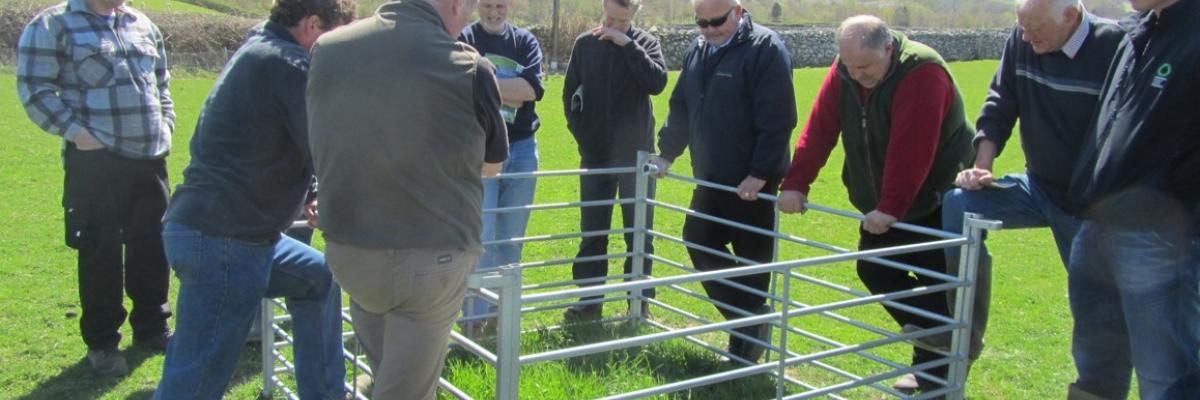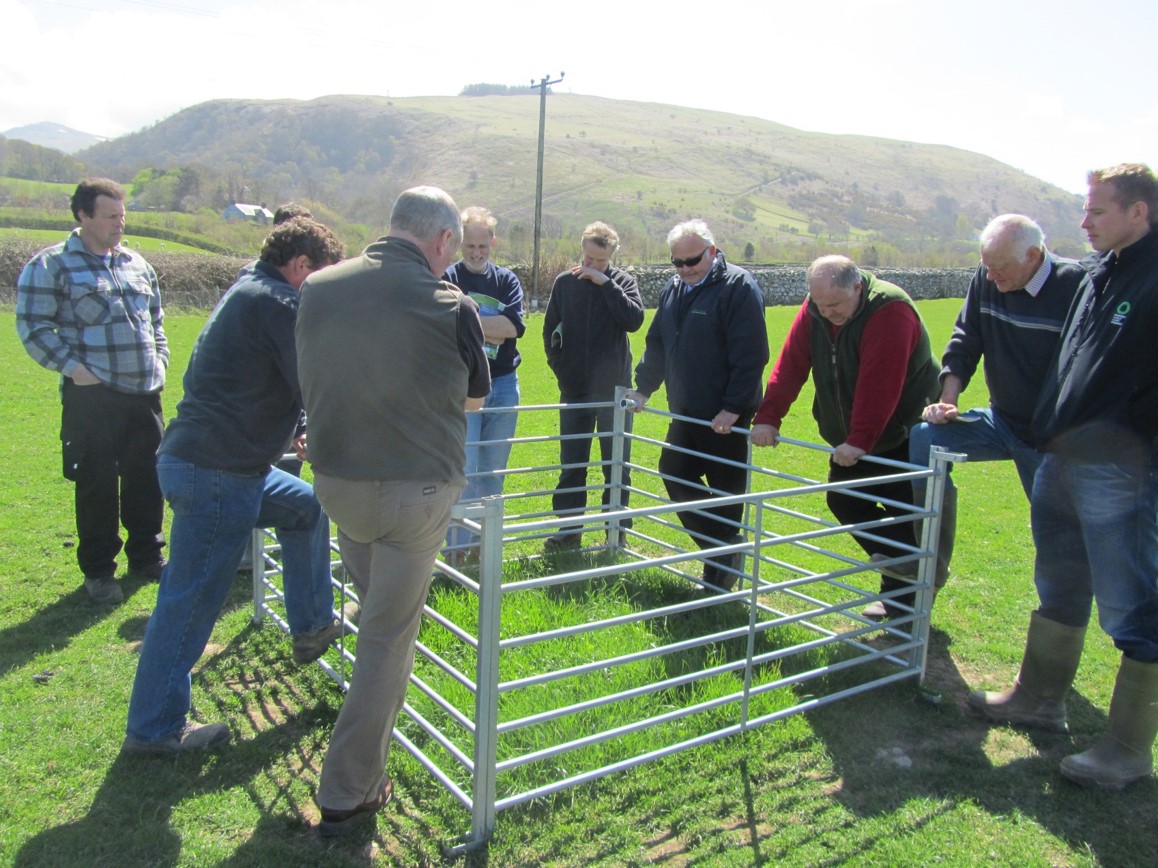
Ian Harris
Manager
Henfaes Research Centre is Bangor University’s research farm, located in Abergwyngregyn - 7 miles east of Bangor. The land at Henfaes extends from sea-level to open common land grazing on the Carneddau mountain range. This diversity provides opportunities for research into lowland agriculture as well as upland systems.
A highly protected landscape, 75% of the land resides in the Snowdonia National Park. 121 hectares are designated as a Site of Special Scientific Interest / Special Area of Conservation, with 114 hectares within Coedydd Aber National Nature Reserve (NNR), which accommodates around 250,000 day visitors a year. The farm participates in Glastir Entry and Advanced agri-environment schemes, plus Glastir Woodlands. Management is centered around maintaining grassland sward height requirements, hay meadow management, woodland grazing, wildlife corridors and bracken control.
Henfaes provides a 49-hectare lowland holding of field, laboratory and greenhouse facilities for research and teaching. The land holding also includes the Centre for Hill and Upland Management (CHUM), which is managed primarily as a commercial sheep unit, with some land parcels and sheep being used for research purposes. Together the resource provides ideal facilities to investigate the role of integrated farm management in both lowland and upland livestock systems.
A range of research projects are currently underway looking at improving efficiencies of agricultural production and balancing production with delivery of other environmental and social goods. The farm focuses on arable crops, sheep and upland research around sustainable intensification, agroforestry, soil science, crop science, nutrient management and greenhouse gas emissions.
Henfaes is a study farm for the Sustainable Intensification Platform (SIP). SIP is a multi-partner Defra and Welsh Government funded research programme that is:
- Bringing together farmers and other stakeholders in collaborative research and practice
- Benchmarking and measuring farm performance against the needs of today and for the future
- Producing software mapping tools for landscape-scale decision-making
- Developing tools and approaches to support on-farm decisions
- Demonstrating best practice in Integrated Farm Management
The SIP study farm network tests and demonstrates a range of alternative farm management practices that have the potential to improve the economic, environmental or social performance of farming systems. The five farms cover a range of farming types and regions, focusing on those that represent significant areas of land use across England and Wales:
- North Wyke and Duchy Future Farm
- Henfaes Research Centre (Bangor University)
- The Allerton Project (Loddington)
- Morley
- Nafferton (Newcastle University Farm)
Improving the use of grass in sheep production systems
Since 2000, our approach has been to try to farm sustainably whilst maximising opportunities for new research. We have participated fully in successive higher-level agri-environment schemes (on the upland part of the site initially) in accordance with the requirements for nature conservation management within the NNR and wider Abergwyngregyn historic landscapes. This low-intensity grazing approach coupled with minimal inputs has delivered biodiversity gains which have extended beyond our enclosed land onto the adjacent common, through entering an agreement with the 22 other grazier members of the common.
The particular focus of our work with SIP is on the efficient production of lamb from upland or hill production systems, which account for a significant proportion of the whole sheep flock in the UK. Within the SIP work, Henfaes is also a focus for knowledge exchange with farmers, advisers and other stakeholders. This includes involving participants in evaluating the practicality and usefulness of the interventions, and encouraging farmers to consider trying similar approaches themselves.
.jpg)
At Henfaes, we use 'farmlet' approaches to test different grazing intensities on different altitudes and pasture types, looking at how to improve the use of grass as the basis for sheep production systems. It is known that much of the UK has favourable climatic conditions to grow large quantities of grass. However, although grass can be a highly nutritious feed and is much cheaper than purchased feedstuffs, a significant proportion of grass grown is believed to be poorly utilised, indeed wasted. There is considerable potential to make better use of grass if soils and grazing are managed to their optimum. As well as being of economic value, this could have environmental benefits through reducing the need to import soya, for instance.
The project looks at low-cost and higher-cost options to increase grass production and utilisation by sheep on both the upland ‘ffridd’ land (the land just beneath the mountain wall) and lowland part of Henfaes. ‘ffridd’ land has had no nutrient inputs for over 35 years and sustains sheep at a very low stocking density. This is typical of much upland in the UK and the project assesses if productivity could be improved on such land, without losing many of the environmental attributes it offers. The trial will enable an economic and environmental assessment of the cost benefits of adopting different strategies of intensification, and should ultimately help deliver more sustainable livestock production systems in the uplands of the UK.
.jpg)
The trial divides the ‘fridd land’ into four treatments; two of which aim to make better use of nutrients through detailed soil analyses to allow for the application of the required amount of lime, phosphate and potassium to improve soil fertility. Another two treatments are grazed on a rotational system to try and increase grass production and utilisation, whilst the other two are set-stocked. The treatment that had nutrient inputs and was rotationally grazed was also re-seeded with a new grass lay.
The trial allows for monitoring the efficiencies of a high cost, high labour system versus the conventional treatment. It has shown that a rotational grazing approach gives grass a ‘rest’ period meaning yield can be improved with little or no extra nutrient inputs. However, lamb performance tends to be better on the set- stocked approach due to factors such as worm burden. This means that whilst output per hectare can be increased through rotational grazing, the duration of time that animals spend on farm may be increased.
Henfaes has long been working closely with many farmers in the neighboring Conwy catchment (see CEFN Conwy project) and hosts regular events for a wide range of audiences including farmers, policy-makers, government, discussion groups, local communities and schools.

Through our role as a LEAF Innovation Centre, we contribute crucial information on the role and development of Integrated Farm Management (IFM) in livestock systems. The concept of IFM is more familiar to arable or horticultural systems, but the team at Henfaes are eager to show the benefits of its implementation in livestock systems.
The University requires the farm to operate at a profit (which it has done since 2000) providing management experience which has been invaluable given the interest in conservation within our student cohort. In the face of uncertainties in the future of agri-environment schemes (that often account for an important portion of upland farms’ viability), research at Henfaes is focusing on the economic and environmental 'win-wins' that can be achieved through efficiencies.
Henfaes is also an Innovation Site for Farming Connect - a multi-million pound programme funded by the Welsh Government to upskill and improve efficiencies of the agriculture and forestry sectors in Wales. This requires Henfaes to undertake innovative trials which can then be showcased to industry.

